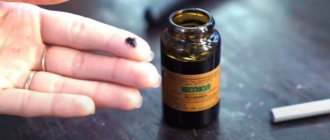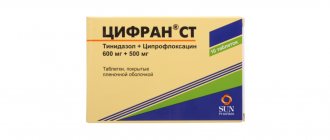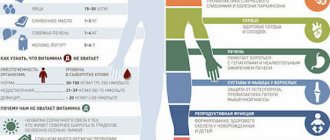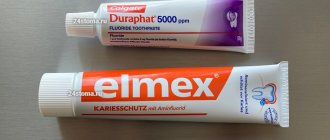Compound
The composition of drugs that belong to penicillin group of antibiotics depends on what kind of medicine we are talking about.
Currently, four groups are used:
- natural penicillins;
- semisynthetic penicillins;
- aminopenicillins, which have an extended spectrum of action;
- penicillins, which have a wide antibacterial spectrum of influence.
Detailed description of the study
Penicillins are a group of drugs (antibiotics) that belong to the beta-lactam class. In addition to them, this group includes cephalosporins, carbapenems and monobactams. All these antibiotics have in common the presence of a lactam ring, which contributes to their antibacterial effect.
Penicillins are classified according to the principle of origin into biosynthetic (natural) and semi-synthetic (chemical). The first group includes bicillins and penicillin G. This study is aimed at identifying specific IgE antibodies to the latter group of drugs.
Penicillin G (benzylpenicillin) is a naturally occurring antibiotic, obtained from the mold fungus Penicillium. Penicillin G is an organic acid from which various salts of the drug are synthesized: sodium, potassium, novocaine, procaine salt, etc. In dosage form, the antibiotic is a powder for intravenous, intramuscular or subcutaneous administration. It may be prescribed to treat sexually transmitted infections and some others.
Penicillin G is a drug with a high allergenic potential - up to 10% of patients are allergic to this antibiotic. However, benzylpenicillin itself is an incomplete allergen (hapten). This means that a reaction can develop only if blood plasma proteins are attached to the drug, which form a C1 complex (Penicilloyl G) with it. The formed complex increases the initial molecular weight of the antibiotic, due to which the immune response is activated - the body perceives the drug as a foreign antigen (allergen). It has been established that if you are allergic to penicillin G, a cross-allergic reaction to other beta-lactam antibiotics may occur.
An allergic reaction (allergy) is a typical immunopathological response to the entry into the body of a special antigen - an allergen. An allergen can be any protein, polysaccharides or haptens (incomplete antigens - for example, drug molecules) foreign to humans. The main properties of allergens are foreignness, immunogenicity (the ability to cause an immune response) and specificity (the ability to bind only to certain receptors or antibodies).
Allergic reactions can occur in an immediate (up to 60 minutes after contact with the allergen) or delayed (up to 2 days) type. When an allergy develops in the form of an immediate reaction, a person notices the formation of itchy red rashes on the skin (urticaria), swelling at the injection site of the drug, which can spread to the face and other areas, difficulty breathing due to bronchospasm. In severe cases, anaphylaxis develops - severe respiratory distress, a sharp decrease in blood pressure and other manifestations that require immediate medical attention.
All described effects are mediated by the action of class E immunoglobulins and the release of histamine in tissues. A delayed allergic reaction to penicillin is less common and is associated with the production of class G antibodies.
Assessing the IgE content to penicillin G using the ImmunoCAP test system allows you to accurately identify an allergy to this antibiotic. The ImmunoCAP analyzer can detect even low threshold values of specific IgE antibodies in the blood. Based on the obtained level of specific IgE, it is possible to predict the clinical development of allergies and formulate the most optimal treatment tactics.
Release form
Injectable preparations are available, as well as penicillin tablets.
The injection product is produced in glass bottles, which are closed with rubber stoppers and metal caps. The vials contain different doses of penicillin. It is dissolved before administration.
Penicillin-ecmoline tablets are also produced for resorption and oral administration. Sucking tablets contain 5000 units of penicillin. In tablets for oral administration - 50,000 units.
Penicillin tablets with sodium citrate may contain 50,000 and 100,000 units.
pharmachologic effect
Penicillin is the first antimicrobial agent that was obtained using waste products of microorganisms as a basis. The history of this medicine begins in 1928, when the inventor of the antibiotic, Alexander Fleming, isolated it from a strain of the fungus Penicillium notatum. In the chapter that describes the history of the discovery of penicillin, Wikipedia testifies that the antibiotic was discovered by accident; after the bacteria entered the culture from the external environment of a mold fungus, its bactericidal effect was noted. Later, the formula of penicillin was determined, and other specialists began to study how to obtain penicillin. However, the answer to the questions of what year this drug was invented and who invented the antibiotic is clear.
The further description of penicillin on Wikipedia testifies to who created and improved the drugs. In the forties of the twentieth century, scientists in the USA and Great Britain worked on the industrial production process of penicillin. The first use of this antibacterial drug for the treatment of bacterial infections occurred in 1941. And in 1945, for the invention of penicillin, the Nobel Prize was received by its creator Fleming (the one who invented penicillin), as well as by the scientists who worked on its further improvement - Flory and Chain.
Speaking about who discovered penicillin in Russia, it should be noted that the first samples of the antibiotic were obtained in the Soviet Union in 1942 by microbiologists Balezina and Ermolyeva. Then industrial production of the antibiotic began in the country. In the late fifties, synthetic penicillins appeared.
When this drug was invented, for a long time it remained the main antibiotic used clinically throughout the world. And even after other antibiotics without penicillin were invented, this antibiotic remained an important drug for the treatment of infectious diseases. There is a claim that the medicine is obtained using cap mushrooms, but today there are different methods for its production. Currently, so-called protected penicillins are widely used.
The chemical composition of penicillin indicates that the drug is an acid, from which various salts are subsequently obtained. Penicillin antibiotics include Phenoxymethylpenicillin (penicillin V), Benzylpenicillin (penicillin G), etc. The classification of penicillins involves their division into natural and semi-synthetic.
Biosynthetic penicillins provide bactericidal and bacteriostatic effects, inhibiting the synthesis of the cell wall of microorganisms. They act on some gram-positive bacteria (Streptococcus spp., Staphylococcus spp., Bacillus anthracis, Corynebacterium diphtheria), on some gram-negative bacteria (Neisseria meningitidis, Neisseria gonorrhoeae), on anaerobic spore-forming bacilli (Spirochaetaceae Actinomyces spp.), etc.
The most active of the penicillin drugs is benzylpenicillin . Resistance to the influence of benzylpenicillin is demonstrated by strains of Staphylococcus spp. that produce penicillinase.
Penicillin is not effective against bacteria of the enteric-typhoid-dysenteric group, causative agents of tularemia, brucellosis, plague, cholera, as well as whooping cough, tuberculosis, Friedlander's, Pseudomonas aeruginosa and viruses, rickettsia, fungi, protozoa.
Classification of penicillin antibiotics
Penicillin is part of a large group of β-lactam antibiotics. The main factor uniting penicillin drugs with the entire group is the presence of a four-membered β-lactam ring.
Within the group, penicillins are divided into two subgroups:
- Naturally occurring penicillin : benzylpenicillin and phenoxymethylpenicillin.
- Semi-synthetic penicillins : ampicillin, amoxicillin, etc.;
Over the course of the long history of use of penicillin antibiotics, a number of bacteria have developed resistance to them. The mechanism of resistance development in this case, as a rule, is based on the ability of a number of microorganisms to synthesize beta-lactamases - special enzymes that neutralize the effect of penicillin.
To overcome bacterial resistance to penicillin antibiotics, special substances are added to the drugs - lactamase inhibitors, for example clavulanic acid. Thus, the antibiotic amoxicillin/clavulanate is effective in the fight against penicillin-resistant staphylococci and a number of other microorganisms, and has a much wider range of applications than other penicillins. This type of medicine is called “protected penicillin”.
Pharmacokinetics and pharmacodynamics
The most effective method is intramuscular administration. After such use, the active component very quickly enters blood . The highest concentration of the product is observed 30-60 minutes after application. After a single administration, only trace concentrations are determined.
It is quickly detected in muscles, wound exudate, in joint cavities, and in muscles.
A small amount of it is observed in the cerebrospinal fluid. A small amount will also enter the pleural cavities and abdominal cavity, so direct local action of the drug is required if necessary.
Penetrates to the fetus through the placenta. It is excreted from the body through the kidneys, so about 50% of the drug is eliminated. Also, part of it is excreted in bile.
If a patient takes penicillin in tablets, he needs to take into account that when taken orally, the antibiotic is poorly absorbed, and part of it is destroyed under the influence of gastric juice and beta-lactamase, which is produced by intestinal microflora .
References
- Medical Immunology. Federal clinical guidelines / ed. R.M. Khaitova, N.I. Ilyina. - M.: FarmarusPrint Media, 2014. - T. 13. - No. 4-5. - 2011. - T. 13, No. 4-5. — 126 s.
- Clinical recommendations “Allergology and clinical immunology” / ed. R.M. Khaitova, N.I. Ilyina. - M.: GEOTAR-Media, 2021. - 336 p.
- Goldberg, A., Confino-Cohen, R. Skin testing and oral penicillin challenge in patients with a history of remote penicillin allergy. AnnAllergyAsthmaimmunol, 2008. - Vol. 100. - P. 37-43.
Indications for use
Antibiotics of the penicillin group, the names of which will be prompted directly by the attending physician, are used to treat diseases caused by microorganisms sensitive to penicillin:
- pneumonia (lobar and focal);
- pleural empyema;
- septic endocarditis in acute and subacute forms;
- sepsis;
- pyemia;
- septicemia;
- osteomyelitis in acute and chronic form;
- meningitis;
- infectious diseases of the biliary and urinary tract;
- purulent infectious diseases of the skin, mucous membranes, soft tissues;
- angina;
- scarlet fever;
- erysipelas;
- anthrax;
- actinomycosis;
- diphtheria;
- gynecological purulent-inflammatory diseases;
- ENT diseases;
- eye diseases;
- gonorrhea, syphilis , blenorrhea.
Penicillin: indications for use
Penicillins are bactericidal, meaning they kill bacteria rather than simply block their growth. The mechanism of action of these antibiotics is based on inhibition of the synthesis of the cell wall of microorganisms.
Penicillin is actively used for diseases such as:
- Upper and lower respiratory tract infections;
- Otitis media;
- Scarlet fever;
- Cystitis;
- Pyelonephritis;
- Syphilis;
- Periodontitis and periostitis of the jaw (flux);
- Meningitis;
- Skin infections: pyoderma, erysipelas;
- Peptic ulcer of the stomach and duodenum.
This is not a complete list of diseases for which antibiotics from the penicillin group are used.
Contraindications
Tablets and injections are not used in the following cases:
- with high sensitivity to this antibiotic;
- for urticaria , hay fever , bronchial asthma and other allergic manifestations ;
- when patients exhibit high sensitivity to sulfonamides, antibiotics, as well as other drugs.
Side effects
During use, the patient must understand what penicillin is and what side effects it can cause. During treatment, allergy symptoms sometimes appear. As a rule, such manifestations are associated with sensitization of the body due to earlier use of these drugs. Allergies can also When using the medicine for the first time, allergies are observed less frequently. There is a possibility of sensitization of the fetus during pregnancy if a woman takes penicillin.
The following side effects may also develop during the course of treatment:
- Digestive system: nausea, diarrhea , vomiting.
- Central nervous system: neurotoxic reactions, signs of meningism, coma , convulsions .
- Allergies: urticaria , fever, rash on mucous membranes and skin, eosinophilia, edema . Cases of anaphylactic shock and death have been recorded. Adrenaline should be immediately administered intravenously.
- Manifestations associated with chemotherapeutic effects: oral candidiasis
Instructions for use of penicillin (Method and dosage)
Antimicrobial action is observed with local and resorptive action of penicillin.
Instructions for the use of penicillin in injections
The drug can be administered subcutaneously, intramuscularly, or intravenously. The drug is also injected into the spinal canal. For therapy to be as effective as possible, the dose must be calculated so that there is 0.1–0.3 units of penicillin in 1 ml of blood. Therefore, the drug is administered every 3-4 hours.
For the treatment of pneumonia , syphilis , cerebrospinal meningitis, etc., a doctor prescribes a special regimen.
Instructions for use of penicillin tablets
The dosage of penicillin tablets depends on the disease and on the treatment regimen prescribed by the attending physician. As a rule, patients are prescribed 250-500 mg, the drug should be taken every 8 hours. If necessary, the dose is increased to 750 mg. It is recommended to take tablets half an hour before meals or two hours after meals. The duration of treatment depends on the disease.
The value of penicillin in medicine
At the height of World War II in the United States, the production of penicillin was already put on the conveyor belt, which saved tens of thousands of American and allied soldiers from gangrene and amputation of limbs. Over time, the method of producing the antibiotic was improved, and since 1952, relatively cheap penicillin began to be used on an almost global scale.
Article on the topic
5 myths about antibiotics, or what the love of pills leads to
With the help of penicillin, you can cure osteomyelitis and pneumonia, syphilis and puerperal fever, and prevent the development of infections after wounds and burns - previously all these diseases were fatal. During the development of pharmacology, antibacterial drugs of other groups were isolated and synthesized, and when other types of antibiotics were obtained, tuberculosis ceased to be a death sentence.
Overdose
It should be borne in mind that when taking large doses of penicillin, an overdose can occur, which can cause unpleasant symptoms in the form of nausea, vomiting, and diarrhea . But this condition is not life-threatening.
hyperkalemia may develop in patients suffering from renal failure .
When large doses of the drug are administered intraventricularly or intravenously, epileptic seizures may occur. But such a symptom appears in adult patients only after administration of at least 50 million units. medications. In this case, the patient is prescribed barbiturates or benzodiazepines.
Interaction
When taken simultaneously with Probenecid, of benzylpenicillin decreases , which leads to an increase in its concentration in plasma and an increase in the half-life.
If combined use with tetracycline , the bactericidal effect of benzylpenicillin is reduced.
Dilution in the same syringe or in the same system for infusion of penicillin and aminoglycosides , since these agents are physicochemically incompatible.
If large doses of benzylpenicillin potassium salt in combination with potassium supplements, potassium-sparing diuretics or ACE inhibitors, there is an increased risk of hyperkalemia.
When taking penicillins that demonstrate activity against Pseudomonas aeruginosa with antiplatelet agents and anticoagulants, caution should be exercised, as there is a risk of increased bleeding.
It is not recommended to take simultaneously with thrombolytics .
Sulfonamides weaken the bactericidal effect of the antibiotic.
When taking Cholestyramine and penicillins simultaneously, the bioavailability of the latter decreases.
When taking oral penicillins simultaneously with oral contraceptives, the effectiveness of the latter may be reduced due to disruption of the enterohepatic circulation of estrogen .
When taking an antibiotic, the process of removing methotrexate from the body may slow down due to inhibition of its tubular secretion.
Russia or Britain: who actually discovered penicillin?
Don't leave cleaning for tomorrow when it can be done... the day after tomorrow
In the early autumn of 1928, British bacteriologist Alexander Fleming returned from vacation and, entering his laboratory, began to inspect his workplace. The scientist was not a proponent of order, and before leaving, he left several unwashed Petri dishes (for working with bacteria).
Everything would be fine, but in the cups there were not just some harmless bacteria left, but Staphylococcus aureus itself - a serious pathogen that causes suppuration.
Inspecting the cups with microorganisms, Fleming noticed that mold had appeared on the cups. Having placed the samples under a microscope, the scientist was surprised: there were no staphylococci in the places where mold accumulated.
This was followed by experiments with different types of mold, and its possible coexistence with bacteria. Conclusion: the mold did not “make friends” with them, as if “fencing off” from its neighbors and not allowing them to multiply.
THE FIRST ONE TO TEST THE SUBSTANCE ON WAS FLEMING'S ASSISTANT WHO SICK WITH SINUSITHRITIS
Liquid formed near the fungal growth site. While studying it, Fleming discovered that it was capable of destroying bacteria. Moreover, these properties were preserved even when diluted twentyfold with water.
Read the material on the topic: How to use antibiotics correctly? Instructions for use
The scientist named the substance “penicillin” (from the name of the genus of fungi Penicillium).
And we have nothing to do with it... or what?
There is no doubt that the story of the discovery of penicillin is elegant, but, as often happens with discoveries, it is not “straightforward and ideal.”
Even before Fleming, the idea of “the stronger and the weaker” was expressed by the French microbiologist Louis Pasteur. Conducting experiments on microorganisms, he found that the causative agents of anthrax - one of the most dangerous infections - could die under the influence of other microorganisms. However, these works were not further developed.
Read the material on the topic: Living according to your dreams. The great discovery of Louis Pasteur
In the 60s of the 19th century (i.e., almost seventy years before Fleming), two Russian doctors began to discuss whether green mold could be a precursor to all fungal formations.
Dr. Alexey Polotebnov spoke out in favor of this possibility, also believing that all existing microorganisms came from it. His colleague, Vyacheslav Manassein, did not share Polotebnov’s point of view.
From words to action
Each of the doctors decided to conduct their own experiment. Manassein found that where mold grows, there are no bacteria. Polotebnov came to the same conclusion. His experiment was different in that he grew mold in an aqueous environment: at the end of the experiment, the water remained clean.
A LITTLE MORE PERSISTENCE FOR ALEXEY POLOTEBNOV AND ACTIVITY FOR DOMESTIC HEALTHCARE - AND RUSSIA WOULD HAVE THE LAURELS OF AN EPIC DISCOVERY
Polotebnov agreed with his colleague and... moved on. He prepared a special emulsion from mold and began to use it to treat patients - mainly for treating wounds. The effect was amazing: the patients felt better much faster than before.
Alexey Polotebnov
Polotebnov published the results of his work, but official science reacted to the virtually revolutionary discovery without enthusiasm.
"Capricious" penicillin
Fleming's experiments showed that mold is dangerous to microbes, but does not harm animals. The first person to test the substance on was Fleming's assistant, who suffered from sinusitis (inflammation of the maxillary sinus/sinus). After introducing a mold extract into his nose, he felt better.
At the end of the 20s, Fleming presented his findings at the Medical and Scientific Club of London. And here representatives of official medicine do not show much interest in the discovery.
According to contemporaries, “a quiet, shy man,” not eloquent, Fleming began to advertise the product. Speeches and articles over several years brought results: “colleagues in the shop” became interested in Fleming’s discovery.
Read the material on the topic: Charles Glen King or Szent-Gyordi: who discovered vitamin C?
Everything would be fine, but penicillin “showed its character”: when received, it quickly destroyed. After several years, Fleming was helped by English researchers Howard Florey and Ernst Chain, who came up with a method for producing penicillin in which it did not disintegrate.
In 1942, penicillin was first used in open trials on patients.
In 1945, Alexander Fleming, Howard Florey and Ernest Chain were awarded the Nobel Prize in Physiology or Medicine for their discovery.
Revenge? Domestic penicillin
A little more persistence for Alexei Polotebnov and activity for representatives of official health care - and the laurels of the epoch-making discovery would have gone to Russia. There is something to think about, because history should teach, right?
...The Great Patriotic War was going on. Unsanitary conditions and poor living conditions led to outbreaks of cholera, a serious infectious disease that could result in death without treatment. Microbiologist Zinaida Ermolyeva creates an anti-cholera bacteriophage for the needs of the army, which subsequently saved tens of thousands of people.
Read the material on the topic: In the name of Victory! The feat of doctors during the Great Patriotic War
Among the unresolved problems remained the problem of bacterial infections. Unfortunately, the available antiseptics (alcohol solution of iodine, etc.) did not help in all cases.
The USSR learned about the work of English scientists. Zinaida Vissarionovna begins research on a method for producing a domestic drug. The goal was achieved in 1942. It began to be produced two years later at chemical and pharmaceutical industry enterprises. Thanks to the first domestic penicillin, thousands of lives of Red Army soldiers were saved.
Interesting fact: in 1944, after receiving the Soviet drug, Professor Flory visited Moscow as part of a scientific delegation. He brought his own penicillin and offered to compare it with the Soviet one. Domestic penicillin showed higher activity: 28 units versus 20 in 1 ml. After this, Flory and his American colleague suggested testing the drug on patients. And here, domestic penicillin also “outperformed” its foreign counterpart.
A start
The history of medicine can be classified according to different criteria. However, it is unlikely that anyone will dispute the fact that the production of penicillin became the line between the “pre-antibiotic” and “antibiotic” eras.
After penicillin, pharmacists began to create other drugs that have a detrimental effect on pathogens. It has become possible to completely cure infections that previously often led to disability and even death. Treatment regimens appeared that used more than one antibiotic. These drugs were produced in forms that can be taken orally, administered intramuscularly and intravenously.
FLEMING WARNED THAT PENICILLIN SHOULD NOT BE USED UNTIL A DIAGNOSIS IS ESTABLISHED.
It would seem that pathogenic microbes are left with no chance of success, but...
Not a panacea
The period of excitement about the successful use of penicillin diminished to some extent when it was discovered that bacteria were developing resistance to it. Back in the late 40s of the last century, cultures of Staphylococcus aureus that were not susceptible to antibiotics were identified.
As new similar drugs were created against various pathogens, the microorganisms themselves did not remain idle, gradually adapting to antibiotics.
One of the important reasons for this phenomenon is that some people sometimes take them uncontrollably, including in incorrect dosages and off-label indications. The medication regimen is not always followed.
Fleming himself spoke about the development of bacterial resistance: he warned that penicillin should not be used until a diagnosis has been established; It should not be used for a short time or in very small quantities.
Today, the problem of antibiotic resistance is very relevant. There is a possibility that medicine will return to the era before their invention. The paradox will be that we will have at our disposal a whole arsenal of drugs that can no longer cope with those who appeared on the evolutionary ladder much earlier than us. Of course, bacteria do not have intelligence, but their ability to adapt through mutations to the invented “weapons” at some stage can change the existing balance of power. Unfortunately, not in our favor.
What can we do?
The recommendations are simple, but quite capable of delaying the time of “total” antibiotic resistance:
- take antibiotics only as prescribed by a doctor;
- do not stop taking them, even if you feel better. Follow the treatment regimen, constantly informing the doctor about all changes - both positive and negative;
— remember: antibiotics are ineffective for viral pathologies.
Is the new the well-forgotten old?
In the history of research into “intermicrobial confrontation” there is another interesting fact, perhaps not as well known as the antibiotic one.
It has long been shown that bacteria - like other organisms - have their “enemies”. Some of them are viruses. But not those that affect animals or humans, but special, bacterial ones. Zinaida Ermolyeva worked with one of these viruses.
Bacteriophages (or simply phages) - viruses that attack bacteria - have been known for a long time. However, after the invention of penicillin, the West apparently did not work very intensively in this area, while the USSR and the countries of Eastern Europe (particularly Poland) continued to work in this direction.
As a result, the Soviet Union gained significant experience in the use of bacteriophages, including in clinical practice. A large center for the problems of phages and phage therapy continues its work in Tbilisi (Georgia).
In recent decades, interest in phage therapy has also been revived in the West. Of course, this area has its own problems. However, in the face of the real danger facing humanity in the form of multiple antibiotic resistance, perhaps bacteriophages are one of the real opportunities, if not to eliminate, then at least to weaken the threat.
Text: Enver Aliyev
special instructions
Before using penicillin, it is important to conduct tests and determine sensitivity to the antibiotic.
Prescribe the medicine with caution to people who have impaired renal function, as well as patients with acute heart failure , people who have a tendency to allergic manifestations or severe sensitivity to cephalosporins .
If 3-5 days after the start of treatment there is no improvement in the patient’s condition, it is important to consult a doctor who will prescribe other antibiotics or combination treatment.
Since in the process of taking antibiotics there is a high probability of fungal superinfection , it is important to take antifungal agents during treatment. It is also important to consider that when using subtherapeutic doses of the drug or with an incomplete course of therapy, the emergence of resistant strains of pathogens is possible.
When taking the drug orally, you should take it with plenty of liquid. It is important to strictly follow the instructions on how to dilute the product.
During treatment with penicillins, it is necessary to strictly follow the prescribed treatment regimen and not skip doses. If a dose is missed, the dose should be taken as soon as possible. You cannot interrupt the course of treatment.
Since expired medicine may be toxic, it should not be taken.
The dangers of penicillin antibiotics
As you know, penicillin antibiotics often cause an allergic reaction, so before starting a course of treatment you need to make sure that the patient is not allergic to this group of drugs.
In addition, taking penicillin antibiotics is often associated with the development of dysbiosis after treatment. This disease is manifested by bloating, diarrhea, or, conversely, constipation, which occurs after a few days of taking the antibiotic and can persist for a long time after completion of the course of treatment.
Fortunately, medical science does not stand still and is constantly striving to improve existing medicines. This problem was solved by Russian scientists who invented and patented a combination of an antibiotic with a prebiotic - a substance that stimulates the growth of its own beneficial lacto- and bifidobacteria. There are two such drugs in the penicillin group - Ecobol (amoxicillin) and Ecoclave (amoxicillin/clavulanate).
These advanced antibiotics successfully cope with infectious diseases, killing pathogenic bacteria, but at the same time they are as gentle as possible on the beneficial intestinal flora.
Thus, the use of antibiotics Ecobol and Ecoclave helps to cope with the disease without causing much harm to the intestinal microflora.
Analogs
Level 4 ATC code matches:
Hiconcil
Ampioks
Ampicillin Trihydrate
Ampicillin
Ospamox
Amoxicar
Flemoxin Solutab
Amoxicillin
Amosin
Amoxil
Ecoball
There are a number of penicillin drugs; the most optimal antibiotic is determined by the doctor individually.
Penicillin price, where to buy
The price of Penicillin tablets depends on the drug and ranges from 30 rubles. per package. You can buy Penicillin in ampoules at a price of 60 rubles per 1 ampoule.
- Online pharmacies in RussiaRussia
- Online pharmacies in UkraineUkraine
- Online pharmacies in KazakhstanKazakhstan
LuxPharma* special offer
- Penicillin G (Infectocillin, Extensillin) 5 million IU No. 1
RUB 1,880 order - Ospen (Phenoxymethylpenicillin) tab. 1 million ME No. 12
RUB 1,480 order
- Ospen (Phenoxymethylpenicillin) syrup 750000 IU/5 ml 60 ml
1380 rub. order
- Penicillin G sodium salt Austria 1 million. ME N1
1190 rub. order
show more
Pharmacy24
- Penicillin G sodium salt No. 100 powder for the preparation of solution for injection Sandoz GmbH, Austria
2522 UAH.order - Benzylpenicillin-KMP 500,000 IU powder PAT "Kievmedpreparat", Ukraine
6 UAH order
- Benzylpenicillin-KMP 1,000,000 IU powder for the preparation of solution for injection PAT"Kievmedpreparat", Ukraine
8 UAH order
PaniPharmacy
- Penicillin bottle Penicillin G sodium salt powder for the preparation of solution for injection 1000000IU bottles No. 100 Austria, Sandoz
2985 UAH. order
- Benzylpenicillin bottle Benzylpenicillin sodium salt powder for injection 1000000IU Ukraine, Kievmedpreparat OJSC
11 UAH order
show more









